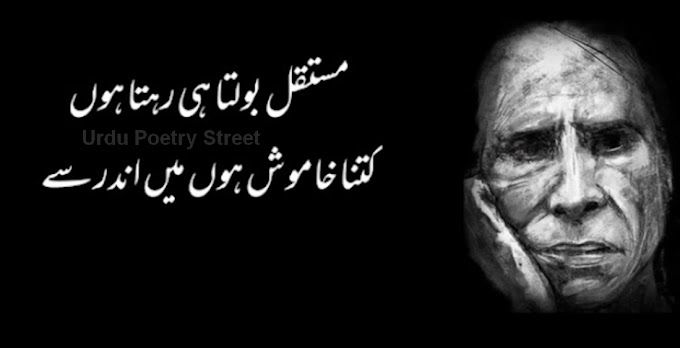Pehly Bhi Tawaaf e Shamma e Wafa Thi Rasm e Mohabbat Walon Ki
Hum Tum Se Pehly Bhi Yahan Mansoor Huey Farhad Huey
پہلے بھی طواف شمع وفا تھی رسم محبت والوں کی
ہم تم سے پہلے بھی یہاں منصور ہوئے فرہاد ہوئے
Interpretation
This couplet reflects a deep sentiment of enduring love and devotion, drawing upon the imagery of traditional rituals and legendary tales to convey the timeless nature of the speaker's feelings. Let's analyze each part:
1. "Pehly Bhi Tawaaf e Shamma e Wafa Thi Rasm e Mohabbat Walon Ki" - "Before, too, it was the tradition of lovers to circumnavigate the candle of loyalty."
In this line, the speaker evokes the image of a candle ("Shamma e Wafa") symbolizing loyalty and fidelity, around which lovers traditionally perform the act of circumlocution ("Tawaaf"). This act is described as a "Rasm," or tradition, of lovers ("Mohabbat Walon Ki"). By employing this imagery, the speaker suggests that their love is not a novel occurrence but rather part of a timeless tradition of devotion and commitment shared by lovers throughout history.
2. "Hum Tum Se Pehly Bhi Yahan Mansoor Huey Farhad Huey" - "Even before us, here, Mansoor and Farhad were martyred."
In this line, the speaker references two legendary figures from Persian and Arabic literature: Mansoor Al-Hallaj and Farhad. Both Mansoor and Farhad are known for their unwavering love and sacrifice, with Mansoor being martyred for his spiritual beliefs and Farhad meeting a tragic end due to his unrequited love for Shirin. By mentioning these figures, the speaker suggests that their love story is not unique, as others have also experienced great sacrifice and suffering in the pursuit of love.
Overall, this couplet speaks to the enduring nature of love and devotion, drawing parallels between the speaker's own experiences and those of legendary lovers from history and literature. It conveys a sense of continuity and universality in the human experience of love, highlighting the timeless themes of loyalty, sacrifice, and longing that have resonated with people throughout the ages.

.webp)








